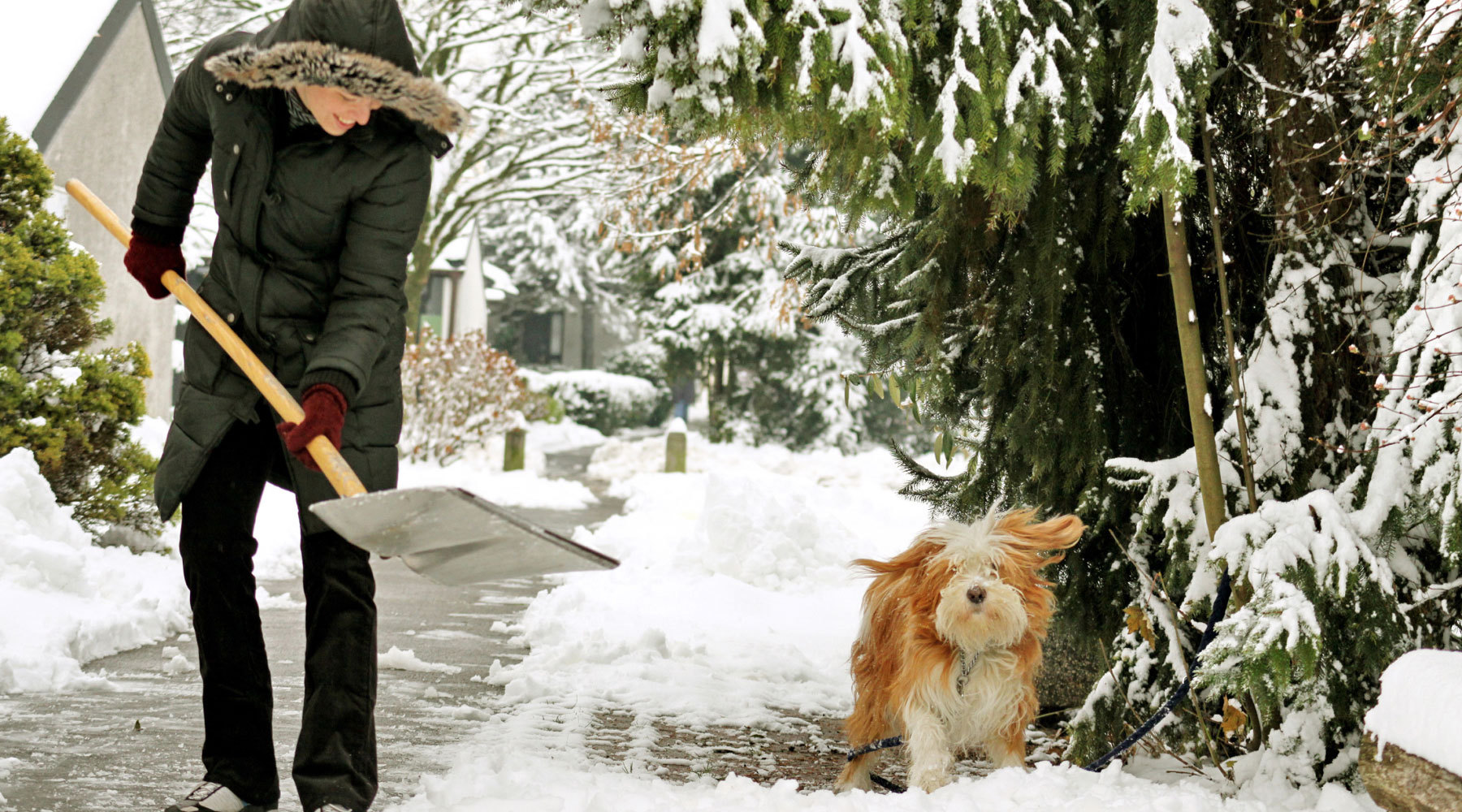
It’s that time of the year in New England again when the flakes are falling, creating a winter wonderland. While we sit and watch it snow outside, we know that sooner or later, we’ll have to break out the shovels, enter the snow globe we’re experiencing from the comforts of the couch, and get to work. And when it comes to getting to that work, it’s important to prepare yourself in an attempt to avoid pesky snow shoveling injuries.
With the slippery conditions outside and the strenuous task of shoveling, the threat of injury is even greater. On average, snow shoveling injuries send 11,000 people to the hospital every year. Some of the most common snow shoveling injuries include back injuries, head injuries, bone fractures, and heart attacks or strokes.
To lessen your risk for injury, we have the do’s and don’ts of shoveling to get you through the winter months.
Do’s
Shoveling snow can be a laborious activity and a great deal of energy is exerted while doing it. It’s important to take breaks whenever necessary to breathe and not overwork your body. Over-exertion can result in heart-related problems. Just like any other physical activity, warming up your muscles before the activity can prevent injuries, like a muscle strain.
Snowy, icy sidewalks and driveways are a leading cause of serious injury while shoveling. Wearing slip-resistant shoes and salting the sidewalks and driveway can help with slippery surfaces. A slip can result in head injury or other bodily injuries, like fractures.
Find the right, ergonomic shovel with a great grip, adjustable length, and curved shaft. Lightweight plastic or aluminum shovels should be used instead of heavy steel ones.
Don’ts
When shoveling, don’t lift the snow, which would cause strain on the back and arms. Instead, push the snow. If you must pick up the snow, lift with your legs and not your back. Your knees should bend and straighten to lift. Don’t throw the snow over your shoulder, as the twisting motion can put a strain on your back.
It may be tempting to wait out the storm and shovel once all is said and done, but to lessen the burden, it’s a good idea to head outside to shovel a couple of times while it’s snowing. Be sure to keep an eye on the forecast as well. If there’s rain in the middle of the snow, it can create a much more daunting task if you’re not quick to clear the “first layer” prior to the rain dampening and compacting it (and making it much heavier).
Let Us Help You Weather The Storm
With unpredictable weather, injuries can definitely happen. We’re here for those unexpected snow shoveling injuries. If you find yourself in an icy situation, we’re here for you.


